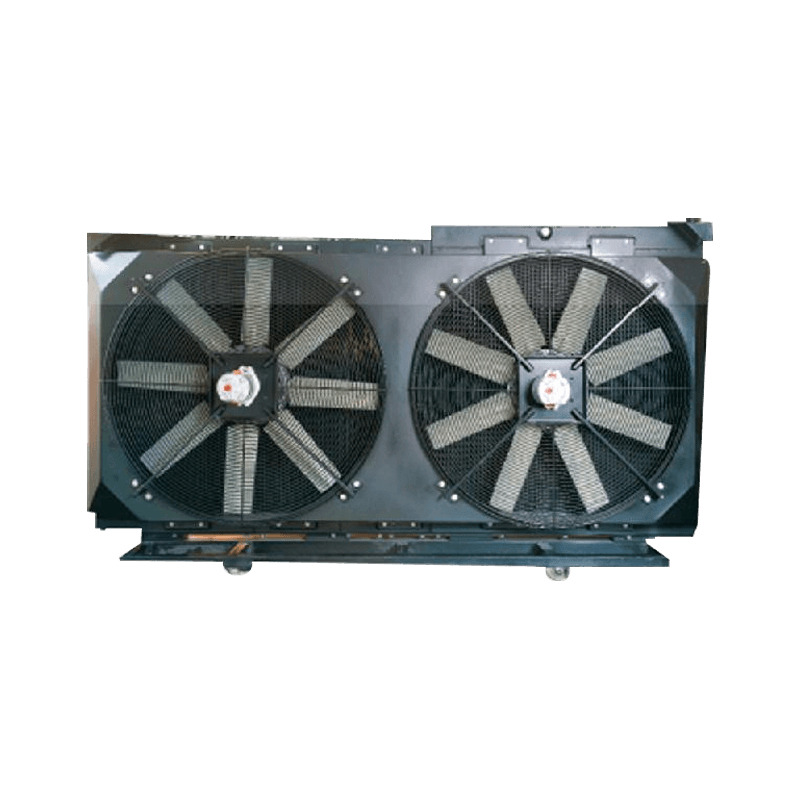 +86-13812067828
+86-13812067828
In the complex world of power generation, optimizing the thermodynamic efficiency of a power plant is paramount. One of the key components that directly influence this efficiency is the heat exchanger. A heat exchanger, essential for transferring heat between two or more fluids without mixing them, plays a pivotal role in maximizing energy recovery and minimizing energy losses. But how exactly do power energy heat exchangers affect the overall thermodynamic performance of a power plant? The answer lies in their ability to efficiently manage heat transfer, enhance the thermal cycle, and support sustainable energy production.
Optimizing Heat Recovery
A primary function of heat exchangers in power plants is to recover waste heat from exhaust gases, steam, or other high-temperature fluids. Power plants, especially thermal power stations, rely on steam cycles to generate electricity. As steam is expanded through turbines, it loses significant thermal energy. Heat exchangers capture this discarded heat and convert it back into usable energy, typically by heating water to create steam for further cycles.
The efficiency of these heat exchangers determines how much of the waste heat can be reclaimed. A high-efficiency heat exchanger minimizes thermal losses, ensuring that the power plant uses the least amount of energy possible to produce electricity. By maximizing heat recovery, power energy heat exchangers reduce the need for additional fuel input, resulting in both economic savings and environmental benefits.
Enhancing the Rankine Cycle
The Rankine cycle, a cornerstone of most thermal power plants, depends heavily on the effective operation of heat exchangers. In the Rankine cycle, water is heated to produce steam, which then drives turbines to generate power. After passing through the turbines, the steam is condensed and pumped back into the system to begin the cycle anew. Heat exchangers are integral to this process, as they help preheat water and lower the energy required for steam generation.
By improving the efficiency of the heat recovery process, heat exchangers allow the Rankine cycle to operate at higher temperatures and pressures, which directly increases the cycle’s efficiency. When a heat exchanger is functioning at peak performance, it reduces the need for supplementary energy inputs while enhancing the overall thermodynamic efficiency of the power plant.
Reducing Fuel Consumption and Emissions
Fuel consumption is one of the largest operational costs in power plants, and it directly affects a plant’s environmental footprint. Heat exchangers contribute significantly to reducing these costs. By recovering waste heat and enhancing the efficiency of energy transfer, these devices allow power plants to operate with less fuel, which, in turn, reduces harmful emissions like CO2, NOx, and particulate matter.

Lower fuel consumption also translates into fewer environmental pollutants released into the atmosphere. This benefit not only improves a power plant’s compliance with environmental regulations but also supports broader sustainability goals by reducing the plant’s carbon footprint. The more efficient the heat exchanger, the less fuel is required, leading to a greener energy production process.
Optimizing System Design and Flexibility
Power plants are complex systems, and the efficiency of each component affects the overall performance. Heat exchangers can significantly influence the design and operational flexibility of a plant. By incorporating highly efficient heat exchangers, plant engineers can optimize system designs to accommodate various operational demands.
For example, in plants that face fluctuating loads or varying operational conditions, heat exchangers enable better heat management, preventing unnecessary thermal stress on the system. They allow plants to adapt to different working conditions without sacrificing efficiency. This flexibility ensures that power plants can maintain peak performance, even under dynamic operating environments.
Improving Long-Term Performance
While the immediate impact of heat exchangers on thermodynamic efficiency is crucial, their long-term performance is equally important. A well-maintained and properly designed heat exchanger can offer substantial gains over the life of the power plant. Over time, they prevent issues such as thermal fatigue, corrosion, and scaling, all of which can diminish heat transfer capabilities and, ultimately, the plant’s efficiency.
Investing in high-quality heat exchangers is an investment in long-term performance. Regular maintenance and operational monitoring can ensure that these components continue to perform at optimal levels, thereby preserving the plant’s thermodynamic efficiency for years to come.
Power energy heat exchangers play a critical role in enhancing the thermodynamic efficiency of power plants. Through their ability to recover waste heat, support the Rankine cycle, reduce fuel consumption, and minimize emissions, they contribute to more cost-effective and environmentally friendly energy production. By optimizing system designs and ensuring long-term performance, heat exchangers are not just mechanical components—they are essential enablers of sustainable energy solutions. In a world where energy efficiency is key to both economic success and environmental responsibility, the role of heat exchangers cannot be overstated.